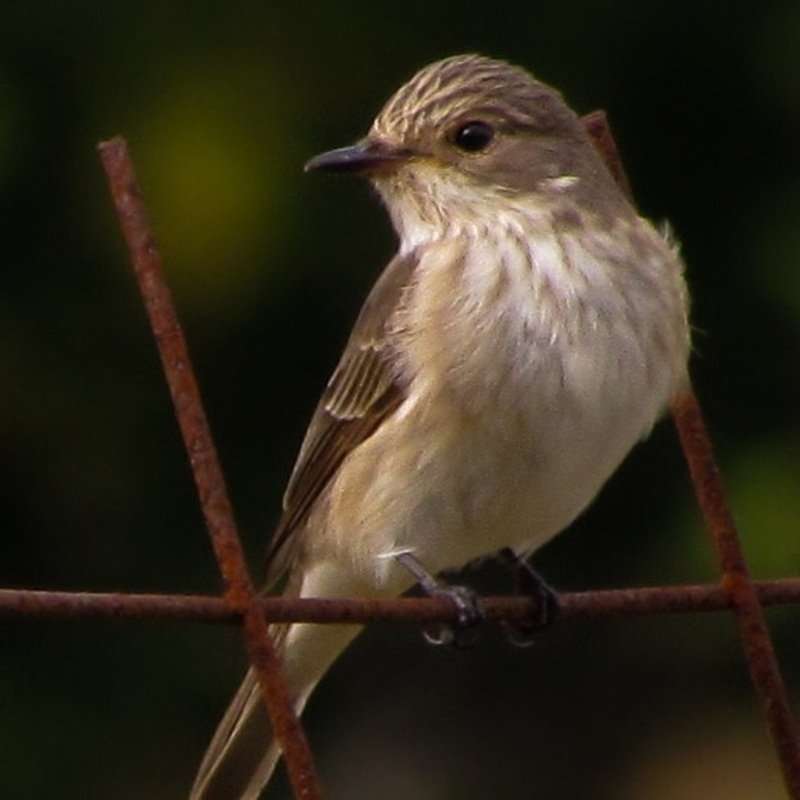The willow flycatcher, Empidonax traillii is a small insect-eating migrant bird found in the Neotropics. There are four recognized subspecies of willow flycatcher, all of which breed in North America (including three subspecies that breed in California).
Quick Overview: Empidonax Traillii – Willow Flycatcher
Body size: Around 5.75 in (15 cm) and a weight of 14
Main colors: Brown-Olive, White, Yellow
Range: Throughout the United States
Migratory Bird: Yes
Best time of the year to see in the U.S.: March, April, May, September, October, November
Conservation Status: Least Concern
Willow flycatcher Description
Small flycatcher, brown-olive upperparts, white neck contrasting with paler breast, white to pale yellow belly, and small white eye-ring. Dark wings with two white bands.

Size
These birds have a length of 5.75 in (15 cm) and a weight of 14 g (0.5 oz). Their wings could range from 8-9 in (20-23 cm).
Feeding
Southwestern willow flycatchers are predominantly insect feeders, darting out in short flights to catch insects in mid-air or hovering to collect insects from leaves.
Habitat
Their nesting habitat is deciduous thickets, particularly willows, which are frequently found near bodies of water throughout the United States and southern Canada. They build a cup nest in a shrub or tree’s vertical fork.
Behavior
Willow flycatchers are solitary birds that congregate and develop monogamous alliances during the breeding season, however, there have been documented instances of polygyny. They are also rather aggressive birds, particularly when another bird is nesting nearby. When nestlings are present, they frequently attack larger birds that approach their nest. Male willow flycatchers frequently defend territories that are greater than what they require for survival.
Empidonax traillii Scientific Classification
- Kingdom: Animalia
- Phylum: Chordata
- Subphylum: Chelicerata
- Class: Aves
- Order: Passeriformes
- Family: Tyrannidae
- Genus: Empidona
- Species: Empidonax trailii
Subspecies
The songs are the most distinctive feature that distinguishes the subspecies. Additionally, mitochondrial DNA study reveals considerable genetic variations between the four subspecies. Their winter ranges were deduced using mitochondrial DNA genetic analyses of 172 birds sampled throughout the winter, in conjunction with plumage coloring and morphological variations.
Best time of the year to see
In the United States, the best time of year to see these birds are during the Spring season (March-May) and during the Autumn season (September – November).
Distribution of the Willow flycatcher in the USA
Breeds from southern British Columbia east to southern Manitoba, Ontario, and Quebec, and south to central California, Nevada, the southwestern United States, Arkansas, and North Carolina. Spends the coldest months of the year in the tropics.
The Willow flycatcher can be found in the following states in the United States – Alabama, Alaska, Arizona, Colorado, Connecticut, Delaware, Florida, Georgia, Hawaii, Idaho, Illinois, Indiana, Iowa, Kansas, Kentucky, Louisiana, Maine, Maryland, Massachusetts, Michigan, Minnesota, Mississippi, Missouri, Montana, Nebraska, New Hampshire, New Jersey, New Mexico, New York, North Dakota, Ohio, Oklahoma, Oregon, Pennsylvania, Rhode Island, South Carolina, South Dakota, Tennessee, Texas, Utah, Vermont, Virginia, Washington, West Virginia, Wisconsin, and Wyoming.

